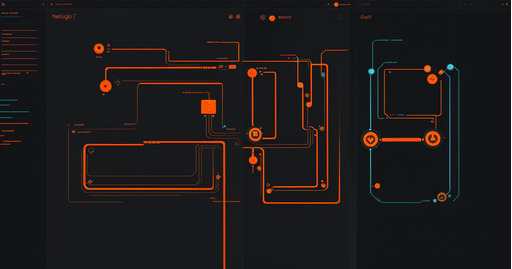The Rise of No-Code Platforms in Modern Business: No-code tools have revolutionized how businesses approach software and automation. With drag-and-drop interfaces, visual workflows, and prebuilt connectors, these platforms empower teams to build apps and automate processes without writing a single line of code. This democratization of technology means non-technical staff can solve operational problems independently, reducing reliance on IT teams and accelerating time to value. Platforms like Zapier, Make, and Airtable are just a few of the many that enable this kind of agile innovation. Businesses now gain the power to test ideas, iterate quickly, and scale automations without the delays and costs of traditional development cycles.
Automating Routine Tasks to Save Time and Money: One of the biggest benefits of no-code tools is their ability to automate repetitive, time-consuming tasks that slow down productivity. Whether it’s automatically sending emails after form submissions, syncing CRM records with invoicing systems, or generating reports from spreadsheets, no-code automation can handle it all. Businesses no longer need to manually input data across systems, reducing human error and freeing up teams to focus on high-value tasks. These improvements not only save hours each week but also lead to faster customer response times and reduced operational costs.
Building Custom Workflows Without Developers: No-code platforms let businesses create tailored workflows that match their unique needs, rather than adapting their processes to off-the-shelf software. From onboarding new clients to tracking inventory, internal approvals, or managing support tickets, custom workflows can be created in hours instead of weeks. Conditional logic, branching paths, and dynamic data inputs are all handled visually. As a result, teams can experiment and optimize workflows quickly, continuously refining them based on real-time feedback without needing to consult a developer every time a change is needed.
Integrating No-Code with Existing Business Systems: Modern no-code tools don’t work in isolation. They come with hundreds of integrations for popular platforms such as Google Workspace, Slack, Salesforce, Stripe, and more. Through APIs, webhooks, and built-in connectors, businesses can automate across departments, making tools talk to each other seamlessly. For example, customer inquiries submitted through a form can automatically create a support ticket, notify the team in Slack, and add the lead to a CRM — all in seconds. This ability to create end-to-end automation using existing systems is one reason why no-code adoption is accelerating across industries.
Scaling Business Automation Without Technical Debt: Unlike custom-coded solutions, which often become hard to maintain as business needs evolve, no-code systems are built for flexibility. Most platforms offer version control, modular components, and easy updates that prevent long-term technical debt. As businesses grow, these tools scale alongside them, enabling teams to add complexity gradually without breaking existing workflows. Furthermore, with role-based permissions and audit trails, no-code tools ensure security and compliance even as usage expands across departments. This makes no-code a sustainable choice for companies looking to scale smartly without compromising reliability.




